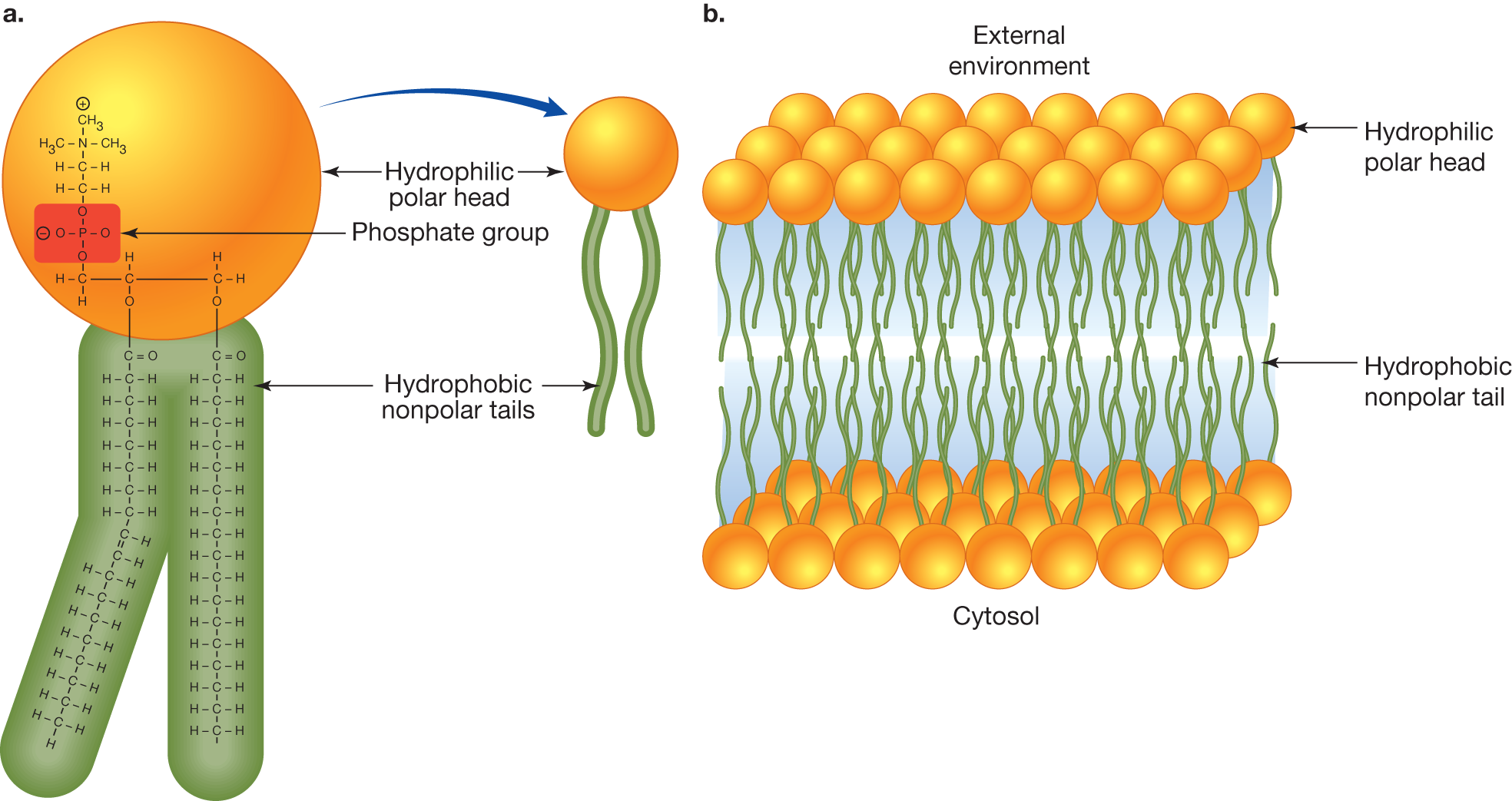THE FLUID MOSAIC MODEL
1/16
There's no tags or description
Looks like no tags are added yet.
Name | Mastery | Learn | Test | Matching | Spaced |
|---|
No study sessions yet.
17 Terms

What is the fluid mosaic model
The fluid mosaic model describes the structure of the plasma membrane.
This model also applies to the membranes that form the outer boundary of cell organelles, such as the membranes that surround the cell nucleus and other cell organelles.
What does the fluid mosaic model propose
The plasma membrane and other intracellular membranes should be considered as fluid layers in which proteins are embedded.
What do the terms ‘fluid’ and ‘mosaic’ mean
The term ‘fluid’ comes from the fact that the fatty chains of the phospholipids are like a thick oily fluid
The term ‘mosaic’ comes from the fact that the external surface (when viewed from above) has the appearance of a mosaic because of the various embedded proteins set in a uniform background

Phospholipid structure
The plasma membrane consists of a double layer (bilayer) of phospholipids
Each phospholipid molecule consists of two fatty acid chains joined to a phosphate-containing group
The phosphate-containing group forms the water-loving (hydrophilic or polar) head of the molecule
The fatty acid chains constitute the water-fearing (hydrophobic or nonpolar) tail of each phospholipid molecule
How are the phospholipids arranged
The two layers of phospholipids in a plasma membrane are arranged so that the hydrophilic polar heads are exposed to both the external environment of the cell and the cytosol (the internal environment of the cell)
The two layers of hydrophobic nonpolar tails face each other in the central region of the plasma membrane
What are the different protein types
Integral proteins
Trans-membrane proteins
Peripheral proteins
Integral proteins
Embedded in the phospholipid bilayer.
Typically, they span the width of the plasma membrane, with part of the protein being exposed on both sides of the membrane
These proteins are described as being trans-membrane.
Trans-membrane proteins
Functions as transporters, receptors, channels and carriers
Integral proteins can be separated from the plasma membrane only by harsh treatments that disrupt the phospholipid bilayer, such as treatment with strong detergents.
Peripheral proteins
Either anchored to the exterior of the plasma membrane through bonding with lipids, or indirectly associated with the plasma membrane through interactions with integral proteins in the membrane
Where can carbohydrate groups attach and what are they called
Carbohydrate groups can be attached to the exposed parts of proteins on the outer side of the membrane, creating combinations called glycoproteins - Sugars attached to a protein = glycoprotein
Other carbohydrate groups, instead, covalently link directly to the lipids in the membrane; these are referred to as glycolipids - Sugars attached to a lipid = glycolipid
The prefix ‘glyco’ means sugar.
What are carbohydrates function
cell-to-cell communication
acting as receptors
distinguishing cells as ‘self’ (a feature that is vital in the immune system).
How are glycoproteins important
Vitally important in immune recognition
Include molecules of the major histocompatibility complex, which is found on the surface of all nucleated cells.
What cells are cholesterol in
Animal cells only
How does it help the plasma membrane
An essential component of the plasma membrane, acting in a fluid manner similar to an iceberg
Makes up about 20% of the membrane by mass
How are cholesterol molecules inserted/where in
Cholesterol molecules are inserted alongside phospholipid molecules in both leaflets of the membrane.
How does cholesterol act on the plasma membrane at low temperatures
maintain the fluidity of the membrane by keeping phospholipid molecules separated
prevent the membrane from becoming too stiff
How does cholesterol act on the plasma membrane at high temperatures
stabilise the membrane by raising its melting point and preventing it from becoming excessively fluid